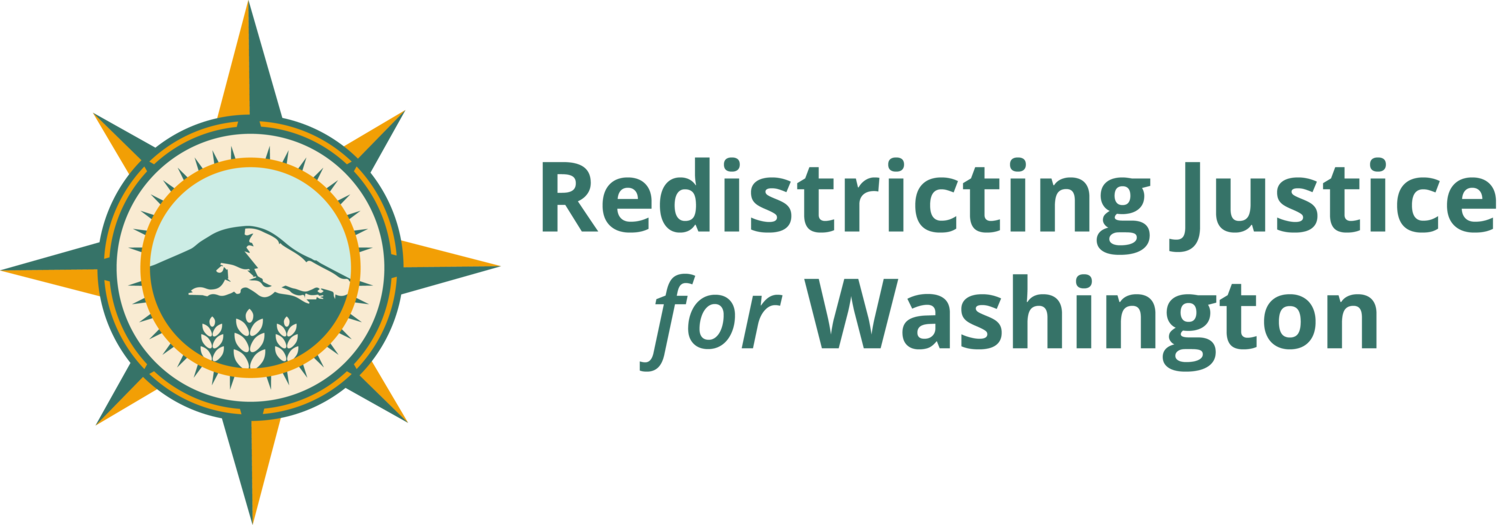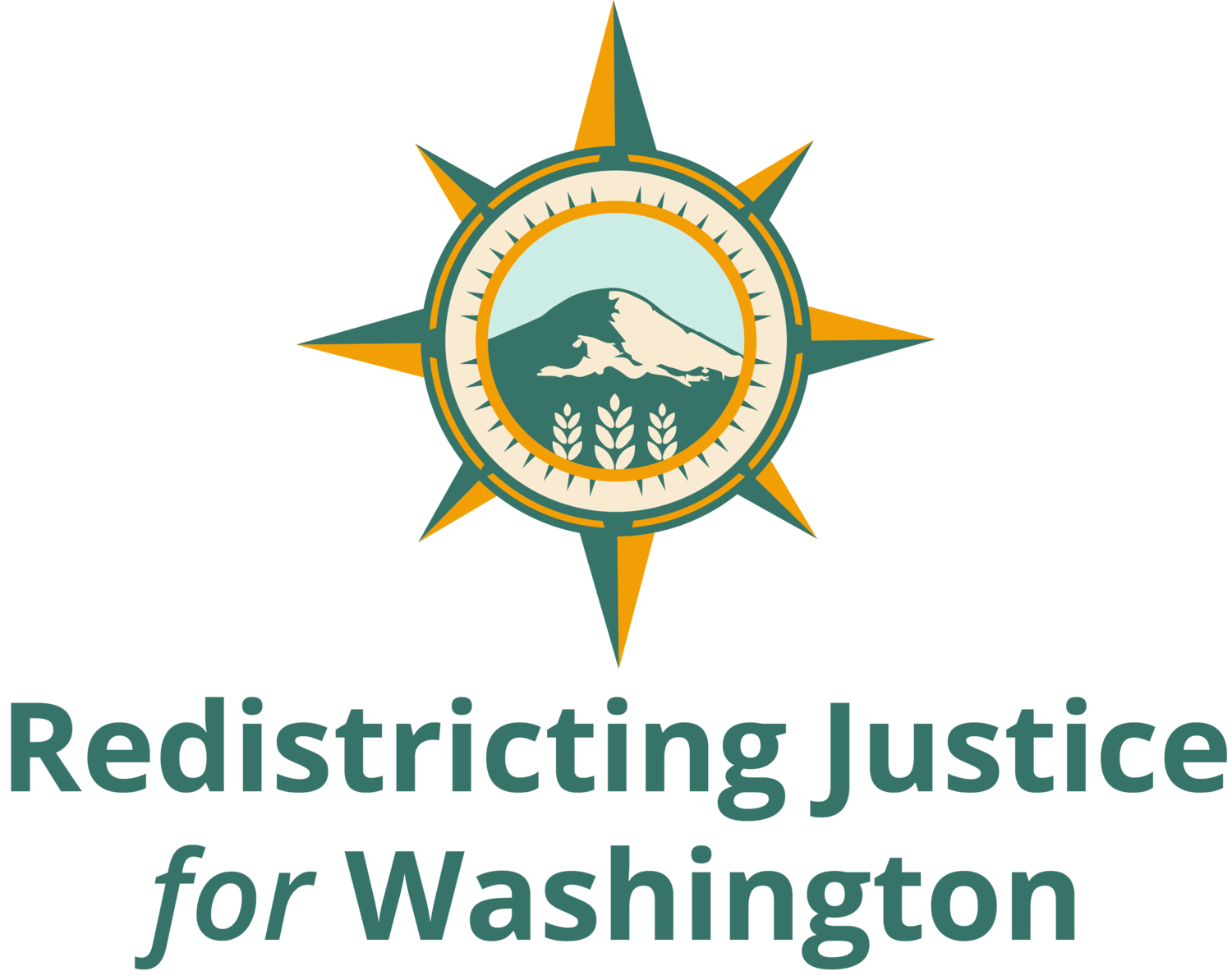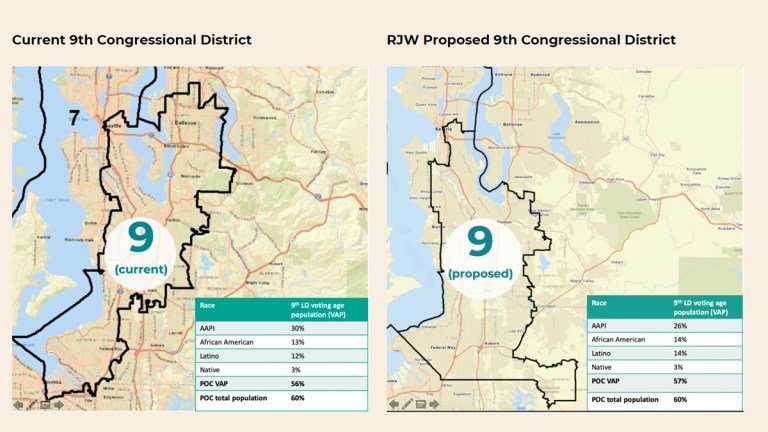Redistricting Is An Opportunity to Build BIPOC Voting Power, Organizers Say
Maps showing current 9th Congressional District lines alongside Redistricting Justice for Washington’s proposed redistricting.
Civil rights groups see the setback as an opportunity. The organization Redistricting Justice for Washington (RJW), which consists of more than two dozen community groups and nonprofits, wants the commission to draw more districts where People of Color make up a majority of eligible voters. South King County and Yakima are among the group’s key focus areas.
“We see that Washington State is roughly 35% People of Color,” said Andrew Hong, the group’s co-director, who grew up in Columbia City and now attends Stanford University. “So by proportionality, 35% of state legislators and congresspeople should be elected by Communities of Color.”
As it stands, however, only one of the state’s current 49 legislative districts — the 37th, which includes much of southeast Seattle, from the Central Area to Renton — has an eligible voting population that’s majority People of Color.
When analyzing districts, Hong uses a measure called citizen voting age population, or CVAP, which looks at the demographics of eligible voters rather than the overall population. “We want to maximize the number of those majority-minority CVAP districts across the state,” he said.
The idea is to work toward maps where 35% of districts are majority-minority by eligible voting population, though Hong admits that’s unlikely anytime soon. Still, he said, the goal is fairer than a situation in which People of Color make up just 35% of each individual district and are unable to elect candidates who represent them.
“Before you even go into the voting booth, you’re drawn into districts,” he said. “That determines the playing field that elections take place in. And so we want to make sure that districts are drawn to represent people and communities, and not parties and politicians or special interests.”


